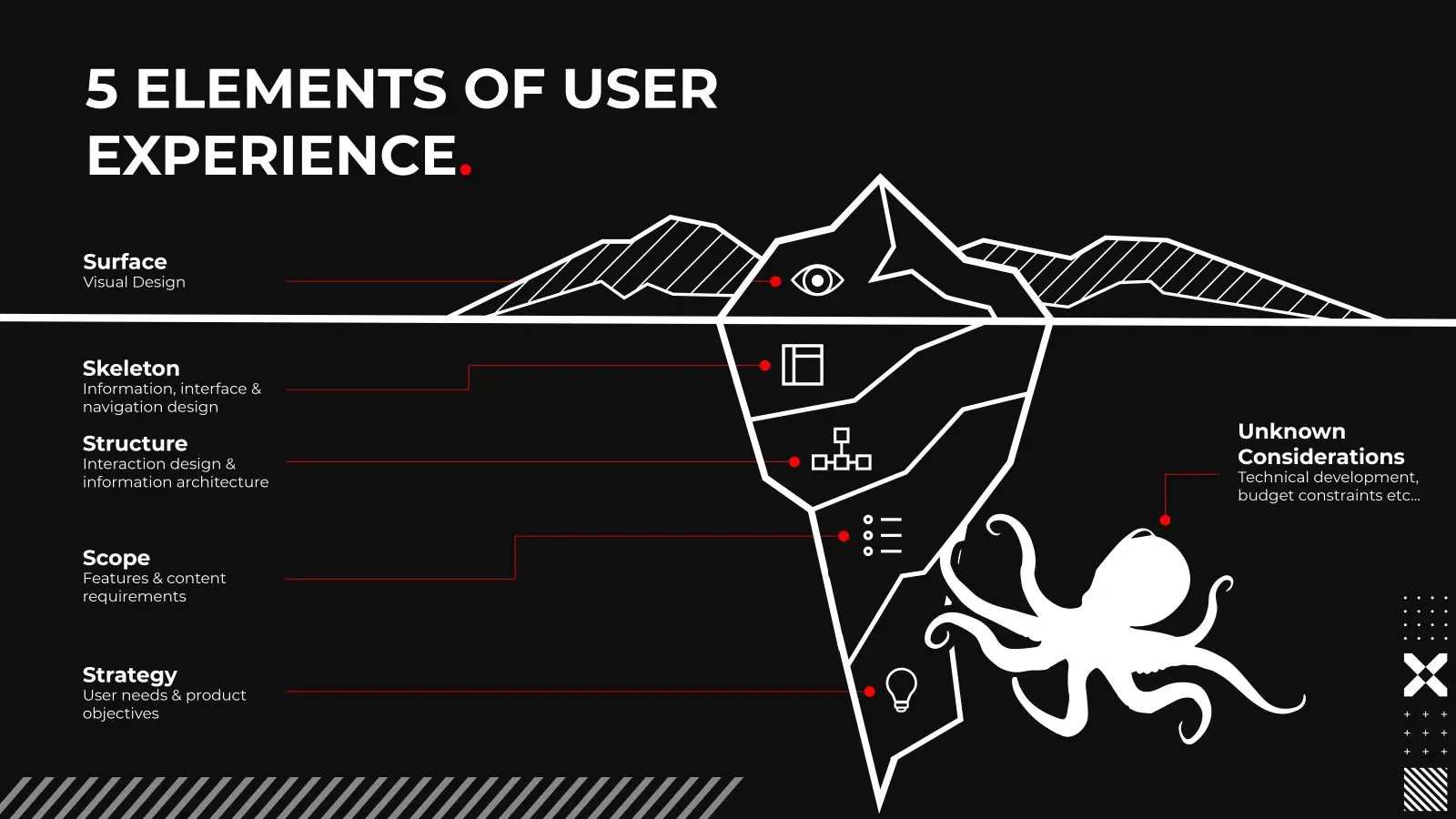In today’s digital landscape, web design plays a pivotal role in shaping user experiences. Whether you’re involved in digital marketing, e-commerce development, or simply building an online presence, understanding the significance of web design is crucial.
How Web Design Shapes User Perception and Engagement

About 15 minutes to read
The Impact of Web Design on User Perception
Picture this: You visit a website, and it looks like it’s straight out of the early 2000s. Cluttered, outdated, and chaotic. What’s your initial perception? You might doubt the professionalism and trustworthiness of the site.
Now, compare that with a sleek, modern website that’s visually appealing, easy to navigate, and well-organized. Your perception changes instantly, and you’re more likely to engage with the content.
The design of a website can be the difference between captivating your audience or sending them clicking away. It’s not just about aesthetics; it’s about creating a seamless user experience. From the layout to the colour scheme, every element influences how users perceive your brand and engage with your content.
The psychology of design is a fascinating field. Colours, fonts, and layouts all carry meaning and can evoke emotions. For example, the choice of blue on a financial website often signifies trust and reliability. It’s subtle yet powerful.
Web design, however, goes beyond the visual. It’s about creating a responsive, intuitive, and fast-loading platform. Users expect a website to load quickly and to be easy to navigate, and failing to meet these expectations can lead to lost opportunities.
The impact of web design extends to your digital marketing efforts. Consider your website as the hub of your digital presence. If it’s not optimised for user engagement, your marketing campaigns may fall flat.
A well-designed website not only attracts visitors but keeps them engaged. Longer visit durations, lower bounce rates, and more conversions are the rewards of effective design.
Investing in web design is investing in your digital success. Your website is your digital storefront, and it should invite, inform, and captivate your audience.

User Engagement and Web Design
User engagement is at the heart of every online venture. It’s what transforms a casual visitor into an active participant. Your website’s design plays a pivotal role in achieving this transformation. Whether you’re in the realm of digital marketing or e-commerce development, understanding how web design affects user engagement is essential.
Imagine your website as a digital storefront. When a potential customer walks by, what will entice them to step inside? It’s not just the products or services you offer; it’s the overall experience. And that experience starts with your website’s design.
An effective website design should be a magnet, drawing visitors in and encouraging them to explore. Here are some key factors that contribute to enhanced user engagement:
1. Responsive Design
In a world where users access websites from various devices, responsive design is non-negotiable. Your website should adapt seamlessly to desktops, laptops, tablets, and smartphones. Ensuring that your site looks and functions well on all devices is the first step in keeping users engaged.
2. Speedy Loading Times
In the fast-paced digital era, patience is a rarity. Users expect web pages to load swiftly. If your website is sluggish, visitors are likely to hit the back button and explore alternatives. Optimising your site’s load speed not only keeps users engaged but also positively impacts SEO, a crucial aspect of digital marketing.
3. Intuitive Navigation
The ease with which users can find what they’re looking for is paramount. Intuitive navigation means a clear menu structure, well-labeled links, and an organised layout. Users should never feel lost on your site; they should know where to click to access the information they seek.
4. Compelling Content
Beyond visuals, the content on your site should be clear, concise, and compelling. High-quality content keeps users engaged, answers their questions, and encourages them to explore further. It’s the glue that holds user engagement together.
5. Visual Appeal
Humans are visual creatures. The aesthetics of your website matter. A visually appealing site creates a positive first impression, drawing users in. It’s like a well-designed shop window that invites people to step inside the store.
6. Interactive Elements
Adding interactive elements like polls, quizzes, or comment sections can increase user engagement. These elements encourage users to participate, making them feel involved and invested in your website. Interactivity creates a sense of community and keeps users coming back.
In the realm of e-commerce development, user engagement translates directly into sales. An engaging website entices visitors to explore your products or services, guiding them smoothly through the purchase process.
Understanding how web design influences user engagement is key to success in the digital landscape. Whether you’re a digital marketing professional or an e-commerce entrepreneur, your website’s design can make or break your online venture.

Best Practices in Web Development
Creating a website that engages users and delivers a positive experience requires following best practices in web development. Whether you’re in the field of digital marketing or e-commerce development, understanding and implementing these practices is essential.
Here are some key considerations for building a website that excels in user engagement:
1. Responsive Design
A responsive design is a fundamental best practice. Your website should adapt seamlessly to different screen sizes, ensuring that it looks and functions perfectly on desktops, laptops, tablets, and smartphones. This responsiveness is vital to engage users across various devices.
2. Mobile Optimization
With the increasing use of mobile devices, optimizing your website for mobile is crucial. Mobile users should have a seamless and user-friendly experience. Mobile optimization goes beyond responsive design and includes considerations like touch-friendly buttons and quick load times on mobile networks.
3. Intuitive Navigation
Intuitive navigation is about making it easy for users to find what they’re looking for. A well-structured menu, clear links, and a logical layout are essential. Users should effortlessly locate the information or products they need, leading to enhanced engagement.
4. Fast Loading Times
The need for speed cannot be overstated. Users expect web pages to load quickly. Slow-loading websites frustrate users and can lead to high bounce rates. Optimizing your website for speed, through techniques like image compression and content delivery networks, is a must.
5. High-Quality Content
Content is the backbone of user engagement. Your website should feature high-quality content that informs, educates, or entertains your audience. Well-written articles, compelling product descriptions, and engaging multimedia content all contribute to keeping users on your site.
6. Accessibility
Web accessibility is about ensuring that everyone, including those with disabilities, can access and use your website. This not only aligns with ethical principles but also broadens your user base. Features like alt text for images and keyboard navigation are crucial for accessibility.
7. Security
Security is paramount. Users need to trust your website with their personal information. Implement security best practices to protect user data and maintain a secure environment. SSL certificates, regular updates, and strong password policies are essential.
By following these best practices in web development, you can create a website that not only engages users but also builds trust and credibility. Whether you’re focused on digital marketing or e-commerce development, these principles are the foundation for success in the digital world.

Website Load Speed and User Experience
In the fast-paced digital world, every second counts. A crucial factor in delivering an exceptional user experience is the speed at which your website loads. Regardless of your focus, be it digital marketing or e-commerce development, the load speed of your site significantly impacts user engagement.
Picture this scenario: A potential customer clicks on a link to your website. If they are met with a slow-loading page, frustration sets in. The user experience begins on a sour note, and you risk losing that visitor. That’s why website load speed is critical.
Here are key aspects to consider when it comes to website load speed and user experience:
1. Page Load Time
Research indicates that users expect a website to load in just a few seconds. If your site takes longer, you’re likely to see higher bounce rates. Optimizing your website’s elements, such as images and scripts, is essential to achieve quick load times.
2. Mobile Load Speed
Mobile users often have even less patience. Mobile load speed is crucial for ensuring that your website offers a seamless experience on smartphones and tablets. Compressed images and streamlined code are some of the techniques that help achieve this.
3. SEO Impact
Search engines, including Google, consider website load speed in their ranking algorithms. A faster website not only pleases users but also boosts your SEO efforts. It’s an important element in your digital marketing strategy.
4. User Engagement
Slow-loading websites often result in poor user engagement. Users get frustrated and may abandon your site. On the other hand, a fast-loading site keeps users engaged, increases visit durations, and reduces bounce rates.
5. E-Commerce Sales
For e-commerce development, the correlation between load speed and sales is direct. Slow load times can lead to abandoned shopping carts and lost sales. Faster websites contribute to a seamless shopping experience, increasing conversions.
Website load speed is not a one-time concern. Regular monitoring and optimizations are necessary. Tools like Google’s PageSpeed Insights can help you assess and improve your website’s speed. Remember that in the digital world, speed is a competitive advantage, and it significantly impacts the user experience.

Visual Appeal in Web Design
In the world of web design, first impressions matter, and visual appeal is at the forefront of creating a captivating website. Whether you’re engaged in digital marketing or e-commerce development, the aesthetics of your site play a significant role in engaging and retaining visitors.
Think of your website as the online face of your business. It’s the first thing visitors see, and it should leave a lasting positive impression. Here’s why visual appeal is vital:
1. First Impressions
When a user lands on your website, they make a snap judgment based on its visual design. A polished, well-structured site immediately conveys professionalism and credibility. In contrast, a cluttered or outdated design can lead to skepticism.
2. Brand Identity
Your website should reflect your brand’s identity. Consistency in color schemes, typography, and overall design aligns your online presence with your brand image. This helps users connect with your business on a deeper level.
3. User Engagement
A visually appealing website captures users’ attention and keeps them engaged. Engaging design elements, such as captivating images, well-chosen fonts, and balanced layouts, make it enjoyable for users to explore your site.
4. Navigation and Readability
The design isn’t just about aesthetics; it’s also about functionality. An intuitive, visually appealing design ensures that users can easily navigate your site and read your content. It contributes to a positive user experience.
5. Mobile-Friendly Design
In the age of mobile browsing, visual appeal extends to mobile devices. Your website should be responsive and maintain its visual charm on smartphones and tablets. Mobile-friendly design is a key aspect of user engagement.
When it comes to e-commerce development, visual appeal can directly impact sales. A beautifully designed e-commerce site with high-quality product images and an easy-to-navigate interface can significantly enhance the shopping experience.
In the world of digital marketing, visual appeal is a powerful tool for capturing the attention of your target audience. Compelling visuals in marketing materials and on your website can make your message more memorable and impactful.
In summary, visual appeal is not a mere bonus; it’s a fundamental element of web design. Whether you’re an e-commerce entrepreneur or a digital marketing professional, investing in the visual aesthetics of your website is an investment in user engagement and success.

Mobile-Friendly Design
In today’s digital landscape, mobile devices play a central role in how users access the internet. Whether you’re in the realm of digital marketing or e-commerce development, having a mobile-friendly website is no longer an option; it’s a necessity for engaging and retaining visitors.
Consider the following scenario: A user searches for a product or service using their smartphone. They land on a website that’s not optimized for mobile, with tiny text and buttons that are impossible to tap. Frustration sets in, and that visitor is likely to leave.
Here’s why mobile-friendly design is critical:
1. User Experience
User experience is paramount in web design. A mobile-friendly design ensures that users on smartphones and tablets have a seamless and enjoyable experience. Elements like responsive layouts and touch-friendly buttons are essential.
2. Google’s Mobile-First Indexing
Google, the leading search engine, now primarily uses mobile versions of websites for indexing and ranking. If your site isn’t mobile-friendly, it may not rank well in search results, affecting your digital marketing efforts.
3. Reduced Bounce Rates
Mobile users have high expectations for speed and usability. A non-mobile-friendly site with slow loading times and awkward navigation is likely to have high bounce rates. A mobile-optimized site keeps users engaged.
4. E-Commerce Sales
For e-commerce development, the significance of mobile-friendliness can’t be overstated. Many shoppers make purchases on mobile devices. A smooth mobile shopping experience can lead to increased sales and higher conversion rates.
5. Accessibility for All
Mobile-friendly design is also about inclusivity. It ensures that all users, including those with disabilities, can access and navigate your website. Features like screen reader compatibility are essential for accessibility.
In summary, mobile-friendly design is not an afterthought but a foundational aspect of modern web design. Whether you’re pursuing digital marketing strategies or focusing on e-commerce development, ensuring that your website is optimized for mobile is crucial for success in the digital age.

Web Accessibility
In today’s digital age, creating an inclusive online environment is not just an ethical consideration but a legal requirement. Whether your focus is on digital marketing or e-commerce development, web accessibility ensures that your website is usable by all, including those with disabilities.
Imagine a potential customer with a visual impairment trying to access your website. If it’s not designed with accessibility in mind, they might struggle to read content or navigate the site. This creates a barrier that can turn them away.
Here’s why web accessibility matters:
1. Inclusivity
Web accessibility is about making your website welcoming to everyone. It ensures that individuals with disabilities can interact with your content, products, and services. Inclusivity is not just a moral obligation; it expands your potential customer base.
2. Legal Compliance
Numerous countries, including the UK, have implemented laws and regulations that require websites to be accessible. Non-compliance can result in legal issues and financial penalties. It’s crucial for digital marketing and e-commerce development professionals to adhere to these laws.

3. Better User Experience
Web accessibility enhances the user experience for everyone. Features like alt text for images, captions for videos, and clear navigation benefit all users. Websites that are easier to use are more likely to retain visitors and customers.
4. SEO Benefits
Search engines value accessibility. Websites that meet accessibility standards often rank higher in search results. Ensuring your website is accessible can boost your digital marketing efforts by improving your online visibility.
5. Reputation and Branding
Having an accessible website positively influences your brand’s reputation. It demonstrates your commitment to providing equal access to information and services. Customers are more likely to trust and engage with businesses that prioritize accessibility.
In summary, web accessibility is not a choice but a necessity. Whether you’re involved in digital marketing or e-commerce development, creating an inclusive online space benefits both your business and society as a whole.
Content Quality and Engagement
In the digital landscape, content is king. Whether you’re pursuing a path in digital marketing or e-commerce development, the quality of your content significantly impacts user engagement. It’s not just about what you say but how you say it that matters.
Imagine this scenario: A user lands on your website, excited to explore your offerings. But if the content is poorly written, lacks value, or is riddled with errors, that initial enthusiasm can turn into disappointment.
Here’s why content quality and engagement are crucial:
1. Establishing Credibility
High-quality content positions you as an authority in your field. It shows that you know your stuff and can be trusted. Whether it’s blog posts, product descriptions, or digital marketing campaigns, credibility is essential.
2. User Engagement
Engaging content captures the attention of your audience. It sparks interest, prompts sharing, and encourages users to explore further. Whether it’s a witty blog post or an informative product description, engagement is the key to retaining visitors.
3. SEO Benefits
Search engines value high-quality content. Well-researched articles, informative product pages, and engaging marketing materials often rank higher in search results. Your digital marketing strategy should revolve around content that boosts your online visibility.
4. Conversion Rates
For those in e-commerce development, content quality directly impacts conversion rates. Persuasive product descriptions, clear calls to action, and engaging content can turn visitors into customers. Content is your online salesperson.
5. Building Relationships
Good content goes beyond transactions; it’s about building relationships. Whether it’s through a well-crafted blog post, engaging social media updates, or informative email marketing, quality content nurtures long-term connections with your audience.
In summary, content quality and user engagement are at the heart of successful online ventures, be it digital marketing or e-commerce development. It’s not just about words on a page; it’s about creating an experience that resonates with your audience.

Optimizing for Mobile Devices
In today’s digital world, mobile devices are ubiquitous, and optimizing your website for them is non-negotiable. Whether you’re focused on digital marketing or e-commerce development, ensuring that your site looks and works beautifully on smartphones and tablets is a top priority.
Consider this scenario: A potential customer lands on your website using their smartphone. If the site isn’t optimized for mobile, they’ll encounter a clunky, difficult-to-navigate experience. The likely result? They’ll leave, potentially never to return.
Here’s why optimizing for mobile devices is paramount:
1. Improved User Experience
User experience is at the core of web design. A mobile-optimized site ensures that users on small screens have a smooth and pleasant experience. This includes responsive design, touch-friendly elements, and streamlined navigation.
2. Higher Search Rankings
Search engines like Google prioritize mobile-friendly websites in their rankings. If your site isn’t optimized, it may lose out on valuable search traffic. It’s a key consideration for your digital marketing strategy.
3. Faster Load Times
Mobile users demand speed. Slow-loading websites frustrate users and lead to high bounce rates. Optimizing for mobile often means faster load times, which keeps visitors engaged and coming back for more.
4. E-Commerce Success
For those involved in e-commerce development, mobile optimization is a game-changer. Many online shoppers use mobile devices to make purchases. A mobile-friendly, easy-to-navigate site can significantly boost your sales.
5. Future-Proofing
The future of the internet is mobile. As mobile device usage continues to rise, ensuring your site is mobile-friendly is a way to future-proof your online presence. It’s an investment in long-term success.
In summary, optimizing for mobile devices is not an optional extra; it’s a fundamental requirement in modern web design. Whether you’re focused on digital marketing or e-commerce development, catering to the mobile audience is a key to success.
Effective Email Marketing
Email marketing remains a powerful tool for reaching your audience, whether you’re in the realm of digital marketing or e-commerce development. Crafting and executing effective email campaigns can drive engagement, conversions, and long-term customer relationships.
Imagine this scenario: A well-designed email lands in a subscriber’s inbox. It’s personalized, contains valuable content, and showcases your latest products. This email has the potential to lead to a sale or a click-through to your website.
Here’s why effective email marketing matters:
1. Direct Communication
Email allows direct communication with your audience. It’s a channel that customers have chosen to engage with. It’s a valuable platform for sharing news, promotions, and educational content related to your field.
2. Personalization
Effective email marketing allows for personalization. You can tailor your messages to individual subscribers based on their preferences and behaviors. Personalized emails are more likely to be opened and acted upon.
3. Conversion Rates
Emails can drive conversions. Whether it’s encouraging a purchase, signing up for a webinar, or downloading a resource, well-crafted emails are powerful tools for nudging subscribers toward action.
4. Building Relationships
Email marketing is not just about transactions; it’s about building lasting relationships. Consistently providing value through emails helps to establish trust and loyalty with your audience.
5. Data-Driven Insights
Email marketing provides valuable data on open rates, click-through rates, and subscriber behavior. You can use this data to refine your strategies, ensuring that your digital marketing efforts are data-driven and effective.
In summary, effective email marketing is a cornerstone of success in the digital age. Whether you’re pursuing a career in digital marketing or e-commerce development, mastering the art of email marketing is a skill that can set you apart in the online business world.
Conclusion
Web design is not merely a visual art; it’s a strategic tool that shapes user perception and engagement. In a digital world driven by digital marketing, e-commerce development, and the quest for best practices in web development, your website’s design plays a pivotal role in your success.
In this comprehensive exploration, we’ve delved into the impact of web design on user experience, the critical importance of mobile optimization, the need for web accessibility, the role of content quality and engagement, and the effectiveness of email marketing. Each facet contributes to the overall success of your online presence.
Remember that in today’s competitive landscape, the key to a thriving online business lies in the details. It’s the responsive layout that makes a user smile, the well-crafted content that keeps them engaged, and the mobile optimization that ensures accessibility. It’s the personalized email that lands in their inbox, fostering a sense of connection.
As you embark on your journey in the worlds of digital marketing, e-commerce development, or any field where web design is pivotal, always keep the user at the center of your strategy. Your website should not only look good but function seamlessly, providing a delightful experience.
By adhering to the best practices in web development, embracing mobile optimization, ensuring web accessibility, delivering quality content, and mastering the art of effective email marketing, you’re equipped to make your mark in the digital landscape.
Now, take what you’ve learned and apply it. Let your website be a testament to the power of web design in shaping user perception and engagement. Whether you’re guiding a digital marketing campaign or fine-tuning an e-commerce development project, let your web design be your secret weapon for online success.
Thank you for joining us on this journey through the art and science of web design. May your online ventures be as captivating and user-centric as the websites you’ve discovered here.